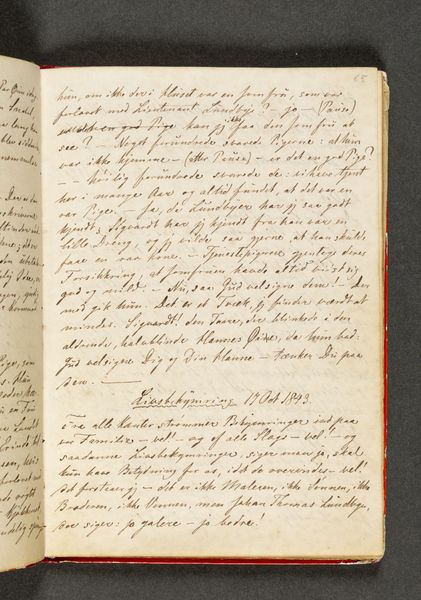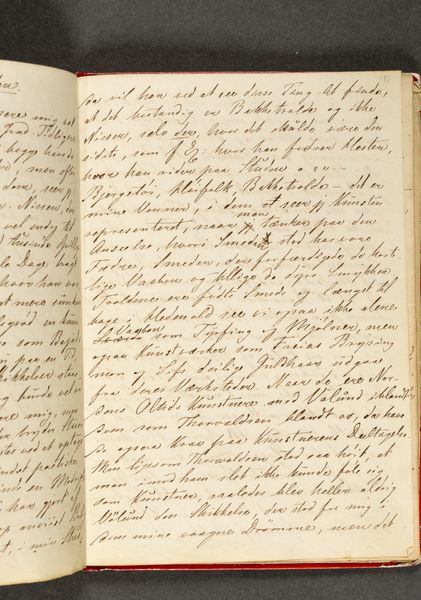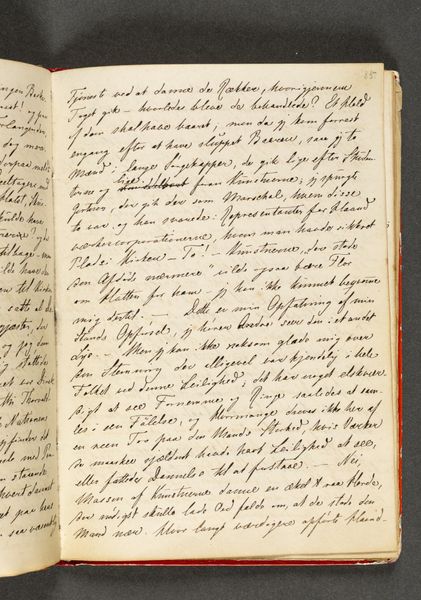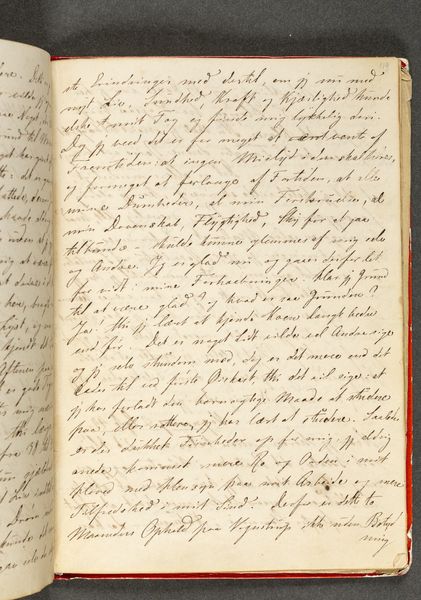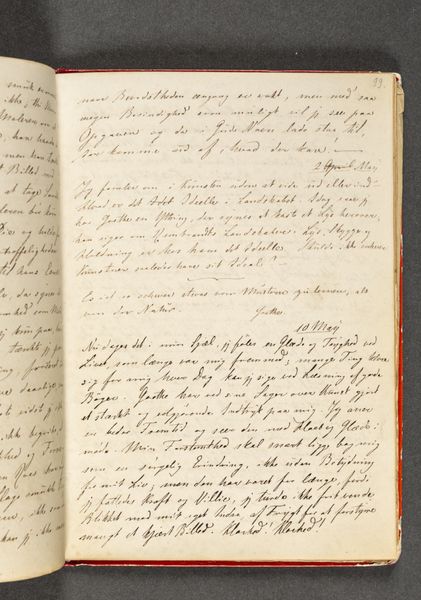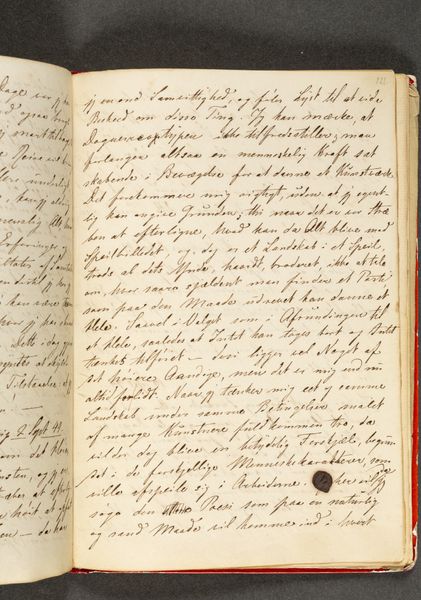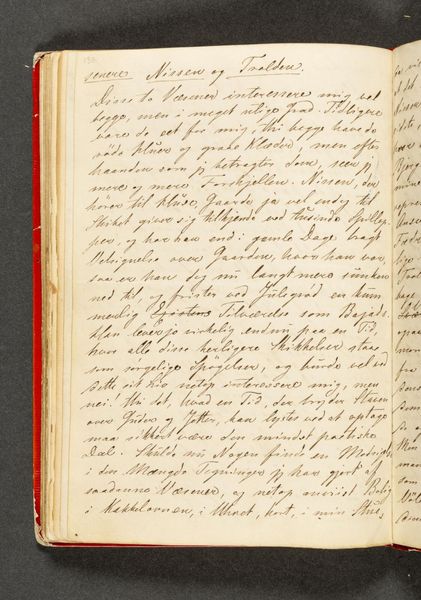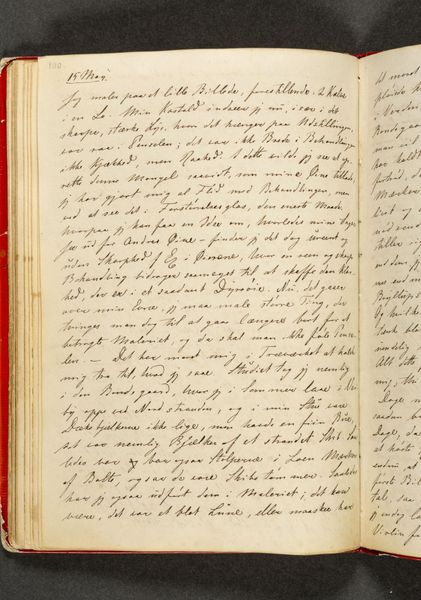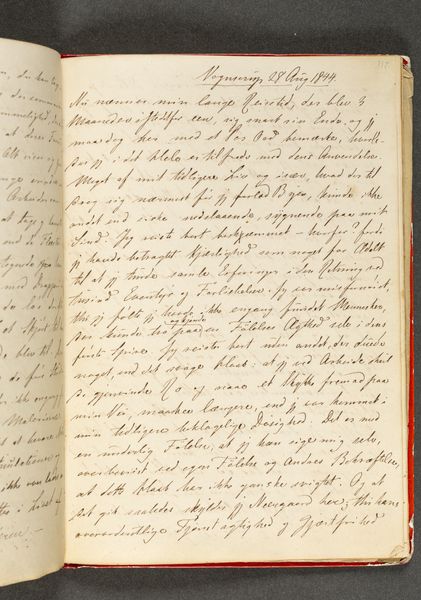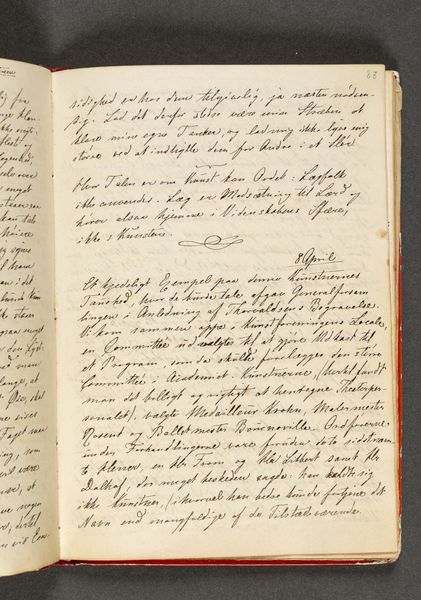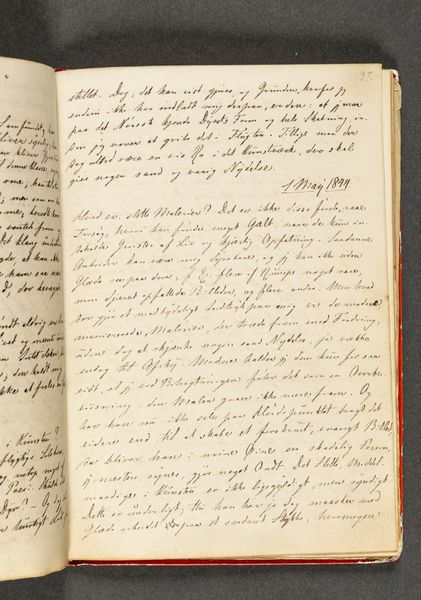
drawing, paper
#
portrait
#
drawing
#
paper
#
romanticism
Dimensions: 192 mm (height) x 133 mm (width) (bladmaal)
Curator: Here we have a page, specifically page 61, from Johan Thomas Lundbye’s 1843 journal. It’s held at the Statens Museum for Kunst. Composed of drawing on paper, it encapsulates Lundbye's Romantic spirit. Editor: There's an immediate sense of intimacy, wouldn't you say? The hand-written script filling the page gives the sense we are reading a private communication, maybe a love letter. It's a vulnerable medium, almost ephemeral. Curator: Absolutely, the journal format provides an unedited window into his thoughts and creative processes. Lundbye, deeply embedded in the Danish Golden Age, used his journals not just for reflection but for drafting ideas for future paintings and other works. He was quite involved in shaping a sense of Danish national identity. Editor: And what is particularly interesting is how "national identity" in this historical moment is tied up with class and production. Was the creation of such a piece tied to a wider societal conversation about literacy or artistic expression and accessibility at the time? Who would have had access to such documents or to create them? Curator: Good point. In terms of technique, note how the drawing isn’t necessarily about precise artistic rendering, but it reflects spontaneity and an unfiltered emotionality through text and gestural lines, which emphasizes process and individual expression. Editor: Agreed. Also consider the accessibility, too. These handwritten manuscripts act like coded messages; we have access to the material of paper and ink, but its language acts as a deliberate filter. This work begs us to understand what ideologies are reinforced or challenged through the simple act of writing and then curating for the public. Curator: Considering materiality, the tangible quality of paper provides the artist to connect with art-making process by offering a personal link to his time, a sentiment the written words strongly amplify. Editor: Indeed, by delving deeper into such works we can open dialogues on accessibility, literacy, and how art serves social or even revolutionary purposes. It encourages viewers to challenge norms by reflecting upon representation, consumption and underlying themes that reveal significant period nuances. Curator: The chance to observe an artist's raw notes opens to reveal insight to the artist and broader art historical movement. Editor: The layers present inside just a single diary page are numerous! This artwork is an inspiring point to begin discussion about art history, cultural memory, and collective future imaginings.
Comments
No comments
Be the first to comment and join the conversation on the ultimate creative platform.
